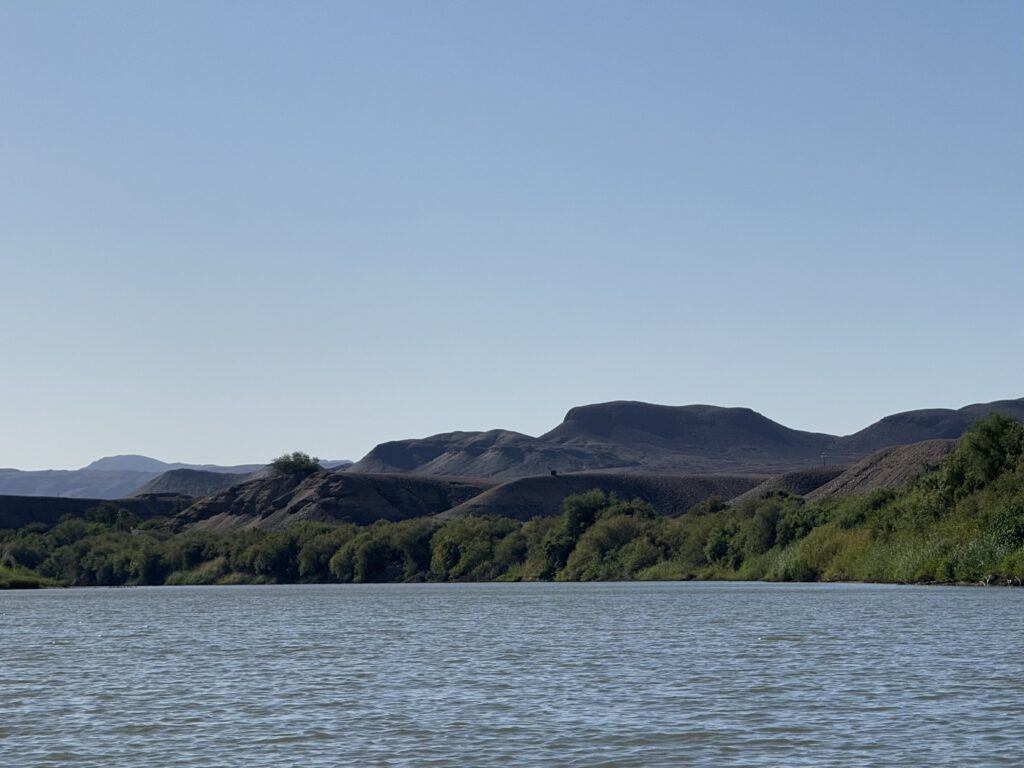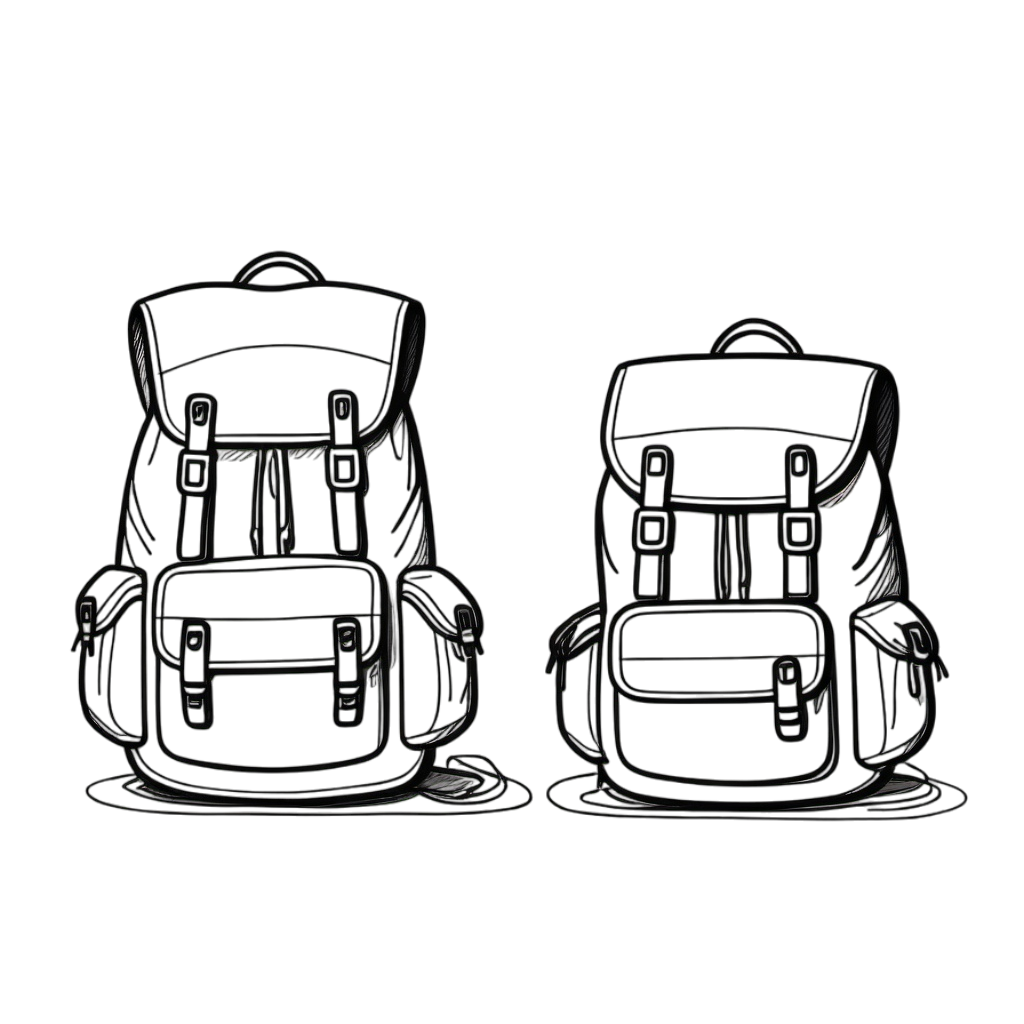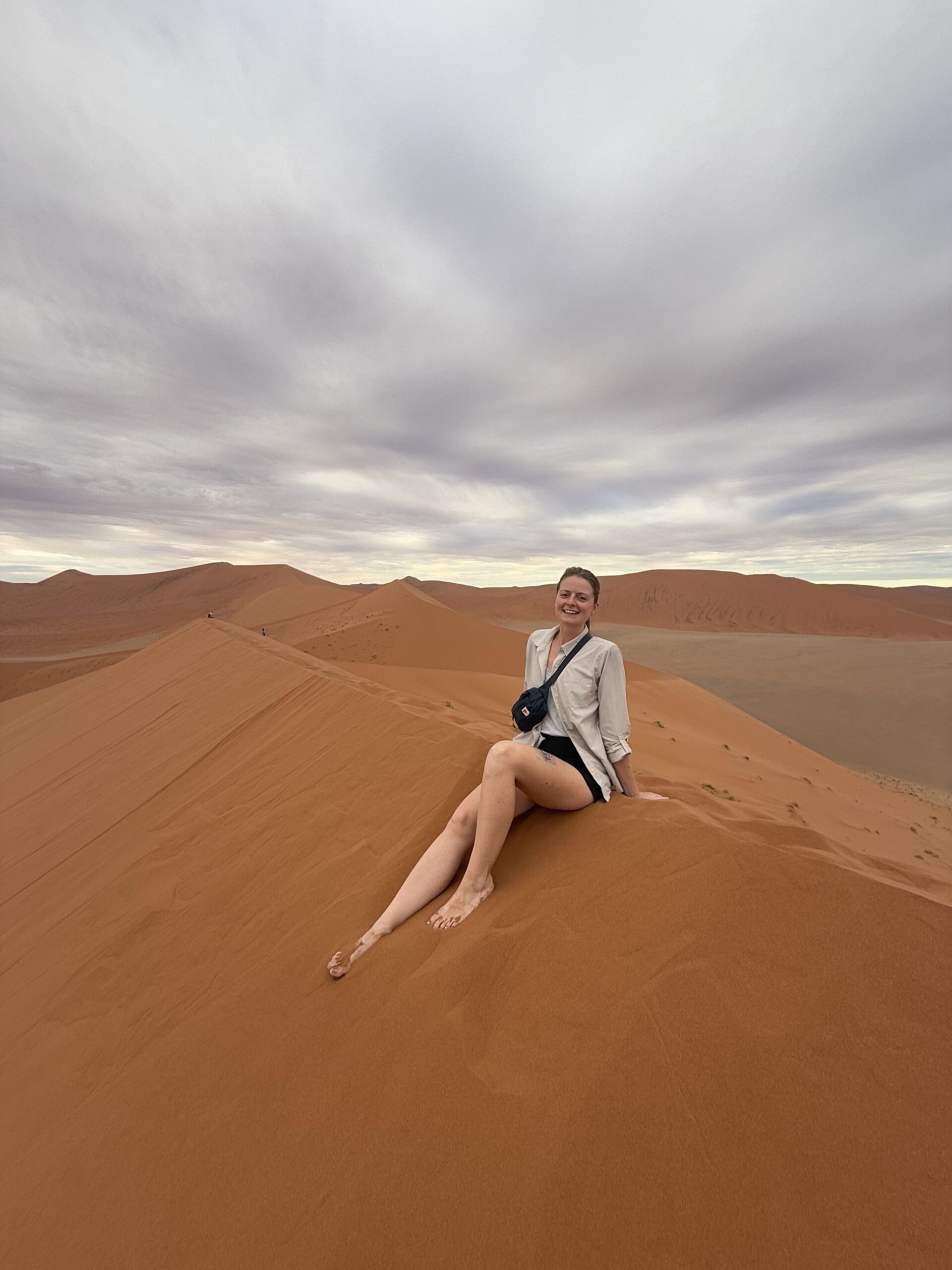Sunday, December 29th – Thursday, January 2nd 2025
World Tour Days 57 – 61

Sadly, after two wonderful nights in Swakopmund we had to continue making our way south through Namibia. On our 6 hour driving day we made stops at various points of interest. First was an area with moonlike landscapes where it was visible tectonic plates went up and down. Our second stop was at the Tropic of Capricorn where the group got to stretch our legs. The last stop of the day before ending at the Solitaire desert was the Sesriem desert where we had a guided tour. The guide was knowledgeable about how to survive in the desert, the animals, the plants, and how nomadic people used to live there. He was engaging and enthusiastic to the point where everyone fell in love with a place we used to think was just sand and heat.


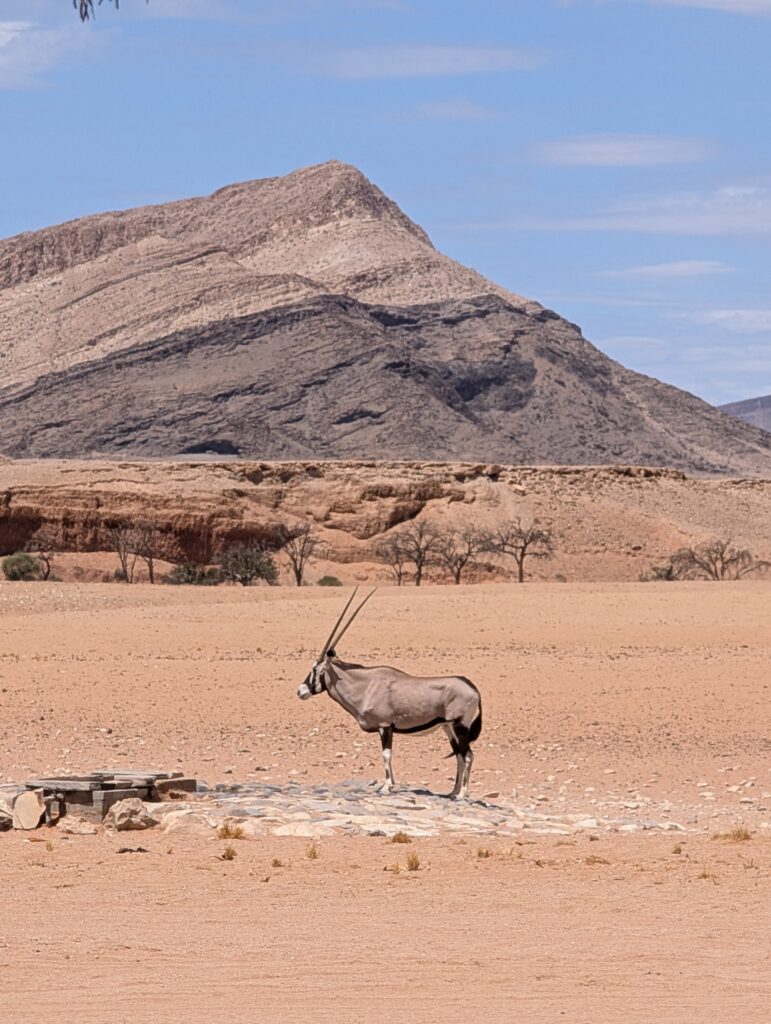
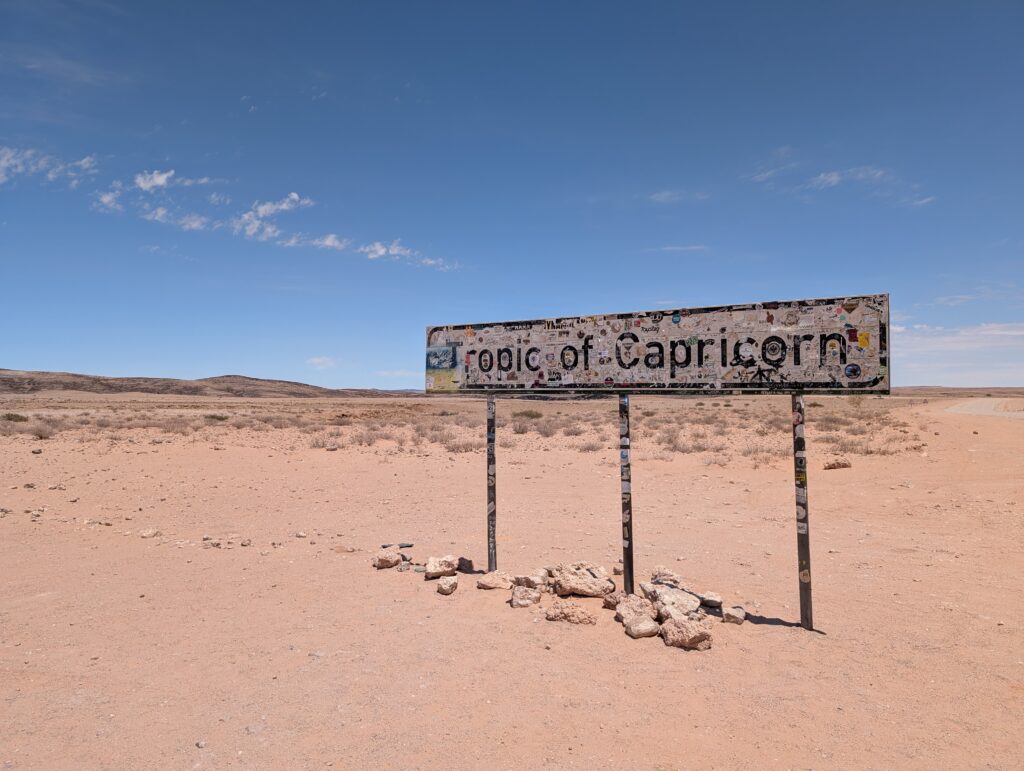

The evening had a spectacular sunset to end the day. The next day was an early morning departure at 4:30am to get to some dunes to hike. The reason for the early start time was to avoid the mid day heat of the desert. First up was Dune 45, which took about 19 minutes to hike up and 10 minutes to hike down for me. Nick got food poisoning the night before so he was moving a bit slower, but did eventually make it to the top. After Dune 45 we had a breakfast at the base of the dune before venturing deeper into the park.

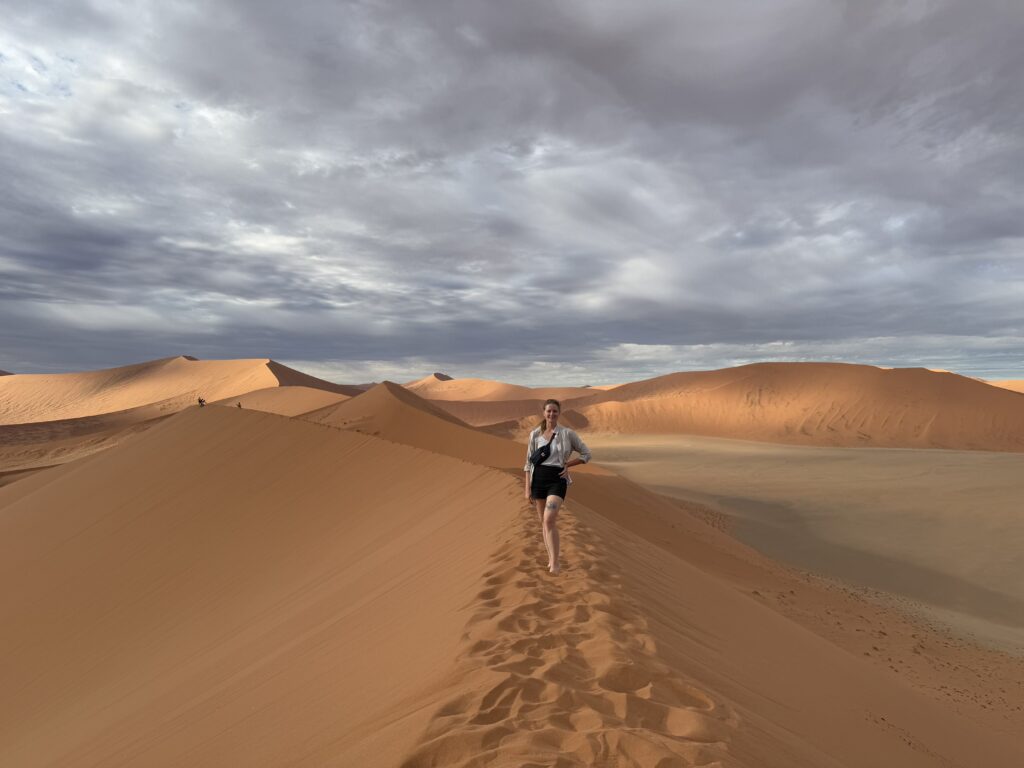

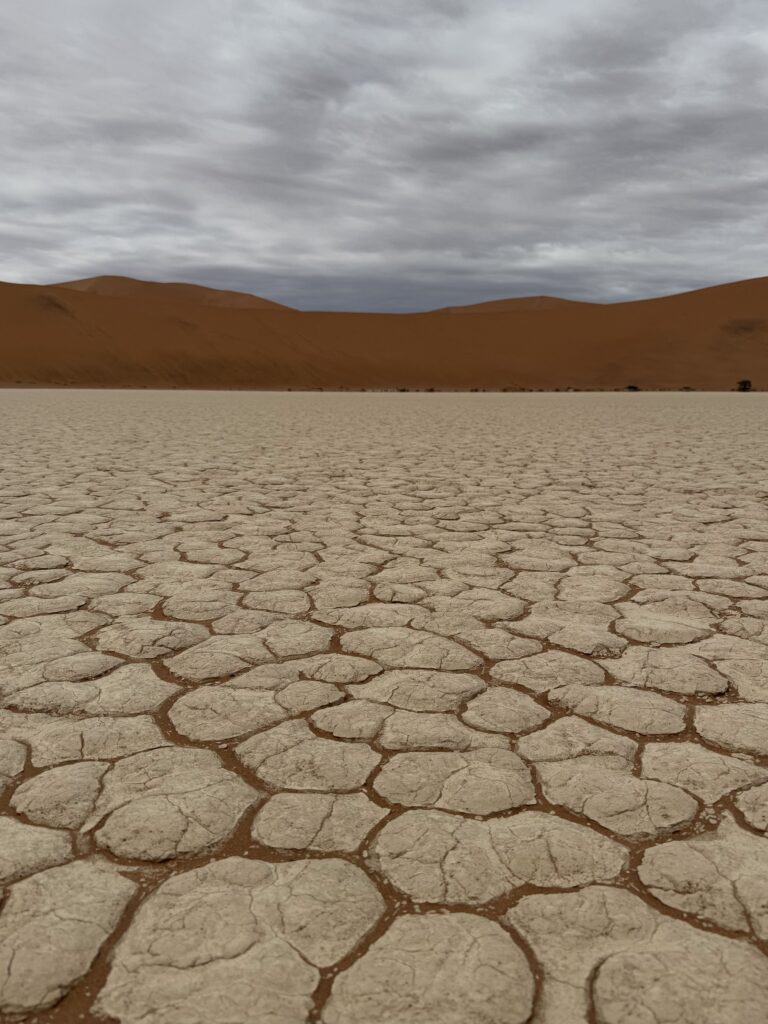
To get deeper into the park we had to switch to 4×4 vehicles rather than our big overland truck. These vehicles dropped us off at the deadvlei. Deadvlei is where a river used to run which supplied water to a few trees amongst the sand dunes, like an oasis. However a new sand dune formed that cut off the water supply which eventually killed the trees in the area. A vlei is a temporary water source and an oasis is a permanent one. We walked through the deadvlei which had a cracked bottom like a dried up lake, and trees that had been dead for over 900 years. All around were sand dunes, and right behind was Big Daddy.
At 325m, Big Daddy sand dune is the tallest in the world and cannot grow bigger since the wind is too strong. I walked to the end of the deadvlei and started to make the hike straight up the sand dune. There is a path that takes almost 2 hours to get to the top that is more gradual, however our group was not given enough time to do that one so straight up it was. I made it to about 20 (vertical) meters away from the top. I sat there and enjoyed the view of the deadvlei below and rolling sand dunes around. If I pushed for the top I knew I would be late to meet the group to move on to our next activities. At this point in the morning the sand was also starting to burn my feet. It was so steep that it took no time at all to get down, taking a few steps and sliding in between. Unfortunately, others from the tour took the long path and were roughly an hour late getting back. If I had known this I would’ve also had time to make it to the top.
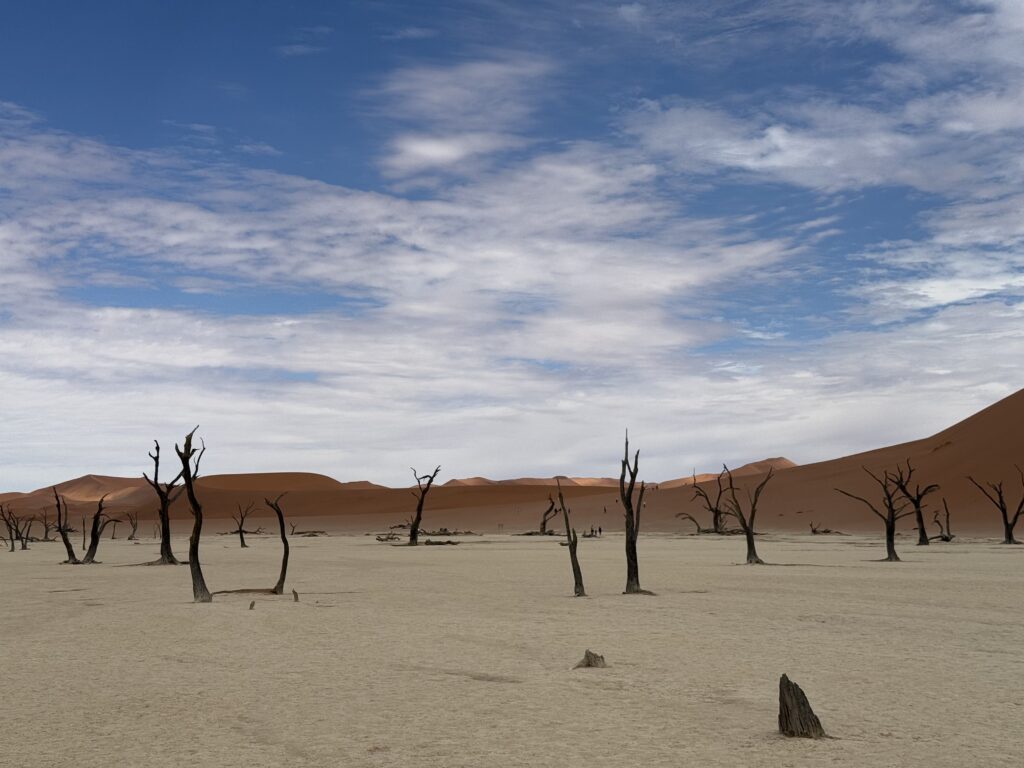

We left the park and continued enjoying the views along the way to camp. The truck stopped at Fish River Canyon (the 2nd largest canyon in the world) for a lookout and leg stretch. As we continued the drive we saw mountain zebras, which are rare to see since they are normally in the mountains as the name implies rather than by the road. They have white legs, eat bushes rather than grass, and drink less water than regular zebras because they are adapted to the desert. Our group spent two nights camping at the same spot in the desert. The next day was a full free day which we spent playing games with the group and doing some trip planning.

The following morning we continued the drive to Keetmanshoop. Along the route there was Sesriem canyon and a few quiver trees. There was a stop at the Giant’s Playground, an area where many stones are balancing on each other. Right nearby was also the Quiver Tree Forest area where there are many quiver trees. There are no longer young trees of this variety because the climate is no longer ideal for them to germinate. Some of the youngest ones were around 50 years of age. The highlight of the area were the rock dassies, the closest animal in DNA to an elephant. They lived amongst the rocks and go to the bathroom in the same spot which leaves a white mark behind.

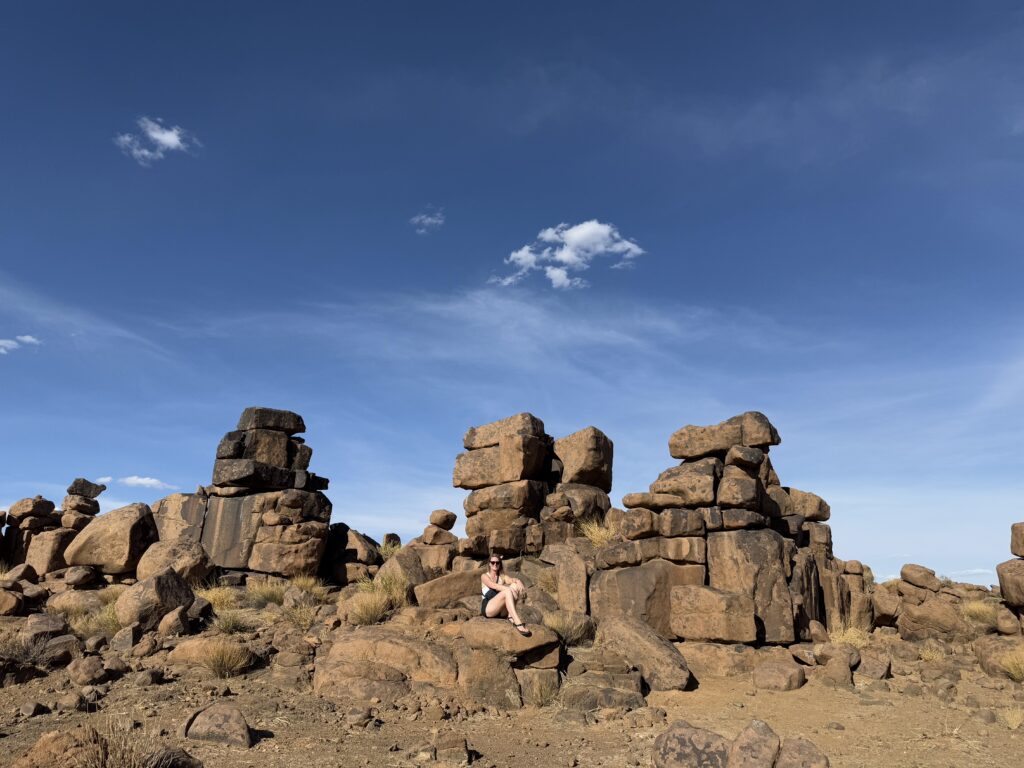

Our final full day in Namibia we drove several hours to the Orange River bordering South Africa. Nick and I, along with 4 others from the truck, went on a guided canoe trip down the river. We were dropped off around 12km upstream from the camp and paddled down for 3 hours. There were sections with narrow canyons, tall reed grass, open fields, and mountains on the sides and in front. The river itself is clean and has no crocodiles or hippos as they were killed by local people to protect their livestock. Many locals were swimming in the river as we paddled along. The temperatures reached 47C today so we also took a break to swim.
The campsite was nice and had a large pool overlooking the river. Nick tried ‘cowboy camping’ outside of our tent in order to be as cool as possible. Unfortunately, the bugs got to be too much so he came back inside after it cooled down a little.
